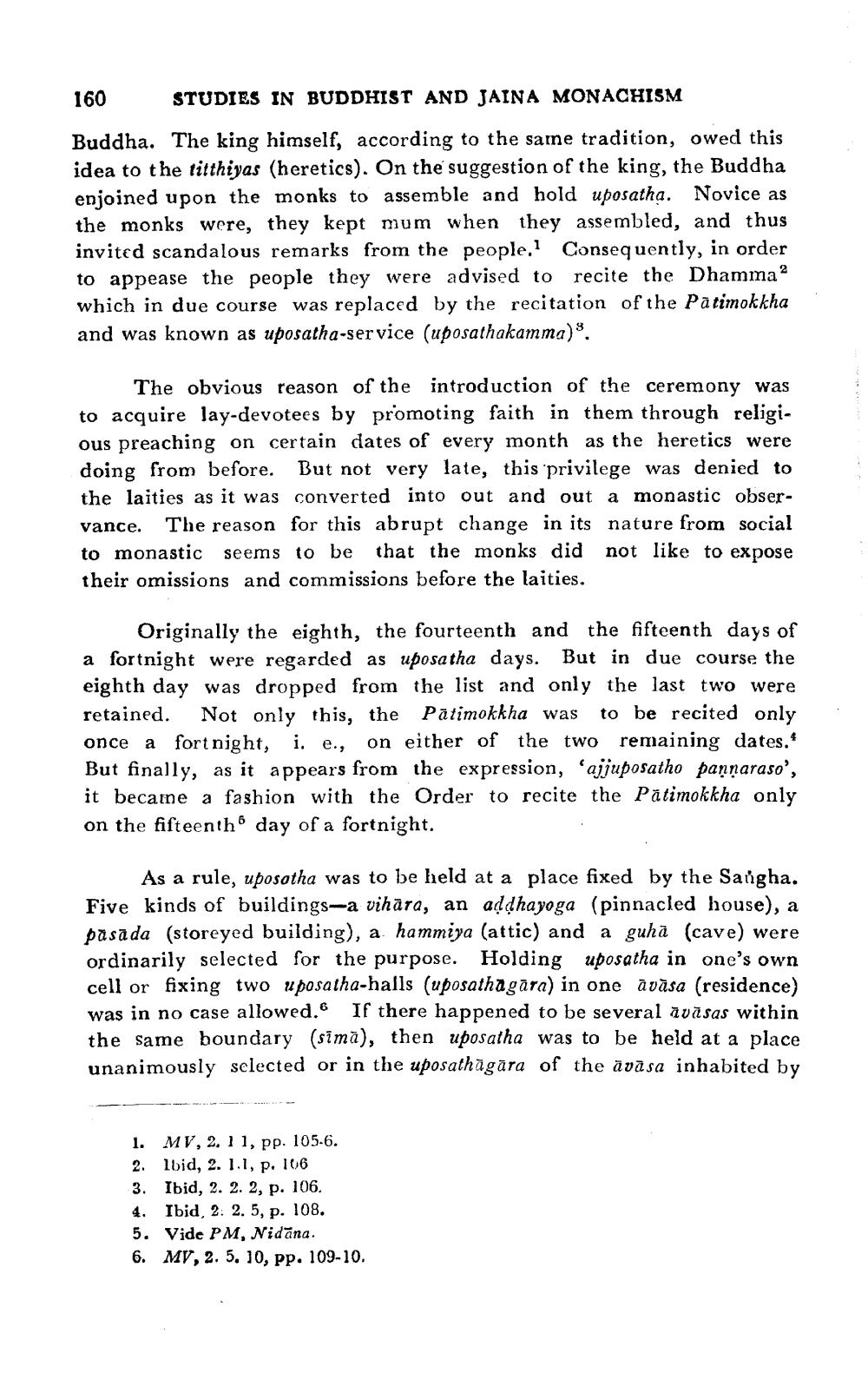________________
160 STUDIES IN BUDDHIST AND JAINA MONACHISM Buddha. The king himself, according to the same tradition, owed this idea to the titthiyas (heretics). On the suggestion of the king, the Buddha enjoined upon the monks to assemble and hold uposatha. Novice as the monks were, they kept mum when they assembled, and thus invited scandalous remarks from the people. Consequently, in order to appease the people they were advised to recite the Dhamma? which in due course was replaced by the recitation of the Patimokkha and was known as uposatha-service (uposathakamma)'.
The obvious reason of the introduction of the ceremony was to acquire lay-devotees by promoting faith in them through religious preaching on certain dates of every month as the heretics we doing from before. But not very late, this privilege was denied to the laities as it was converted into out and out a monastic observance. The reason for this abrupt change in its nature from social to monastic seems to be that the monks did not like to expose their omissions and commissions before the laities.
Originally the eighth, the fourteenth and the fifteenth days of a fortnight were regarded as uposatha days. But in due course the eighth day was dropped from the list and only the last two were retained. Not only this, the Pātimokkha was to be recited only once a fort night, i. e., on either of the two remaining dates.* But finally, as it appears from the expression, Sajjuposatho pannaraso', it became a fashion with the Order to recite the Pätimokkha only on the fifteenth day of a fortnight.
As a rule, uposotha was to be held at a place fixed by the Sangha. Five kinds of buildings-a vihāra, an addhayoga (pinnacled house), a pasāda (storeyed building), a hammiya (attic) and a guhā (cave) were ordinarily selected for the purpose. Holding uposatha in one's own cell or fixing two uposatha-halls (uposathagara) in one avāsa (residence) was in no case allowed. If there happened to be several avāsas within the same boundary (sīmā), then uposatha was to be held at a place unanimously selected or in the uposathägära of the avasa inhabited by
1. MV, 2.11, pp. 105-6. 2. lbid, 2. 1.1, p. 106 3. Ibid, 2. 2. 2, p. 106. 4. Ibid, 2. 2. 5, p. 108. 5. Vide PM, Nidāna. 6. MV, 2. 5. 10, pp. 109-10.




